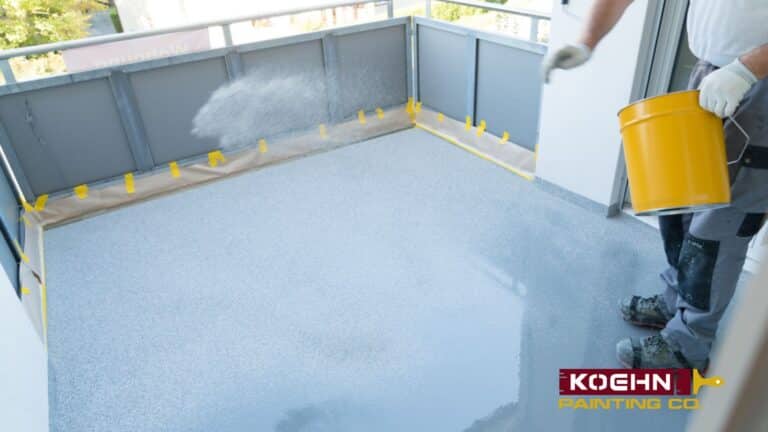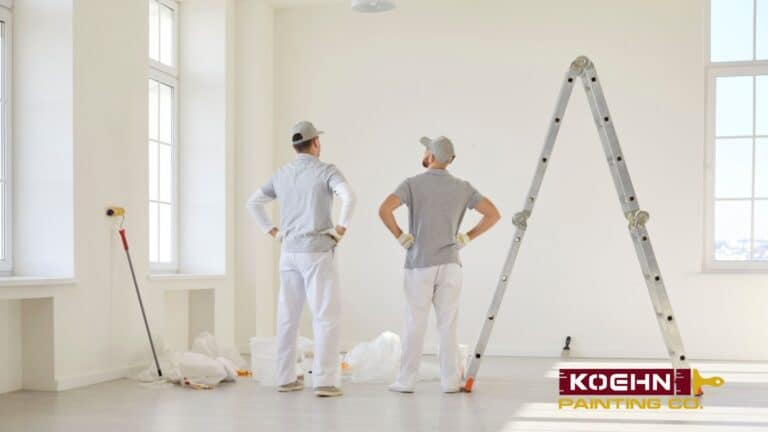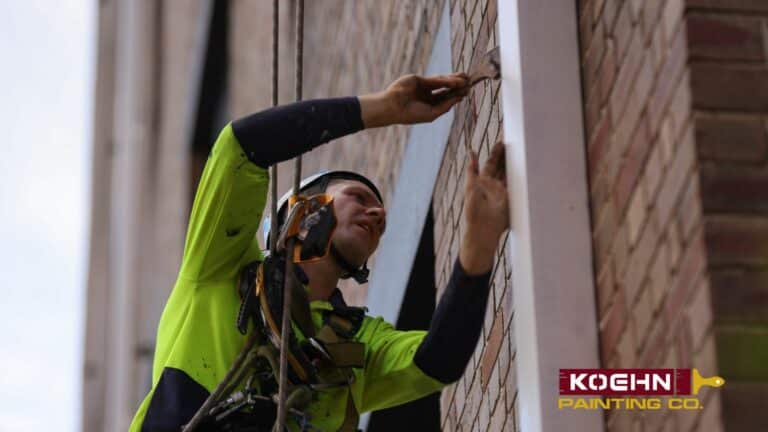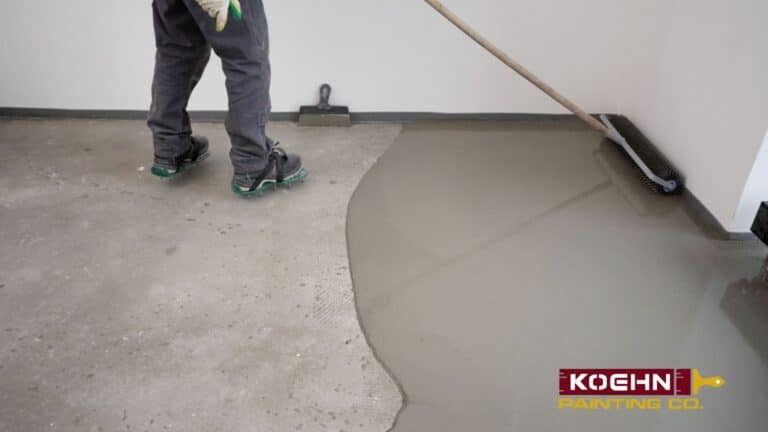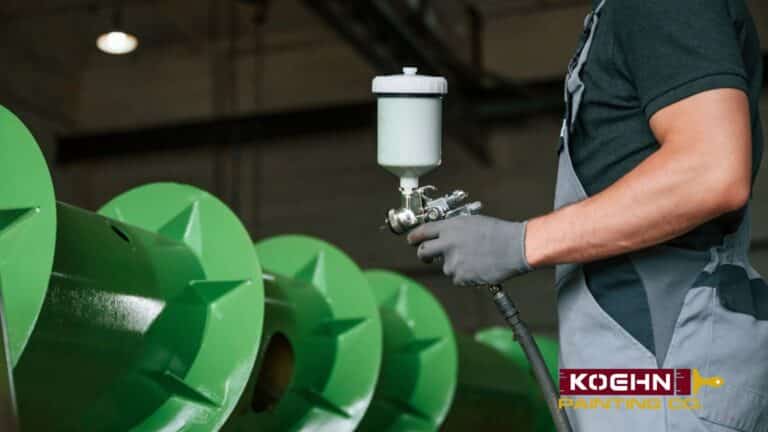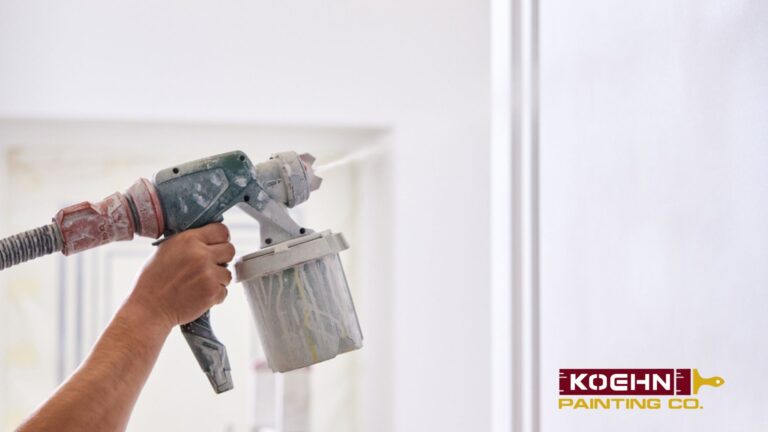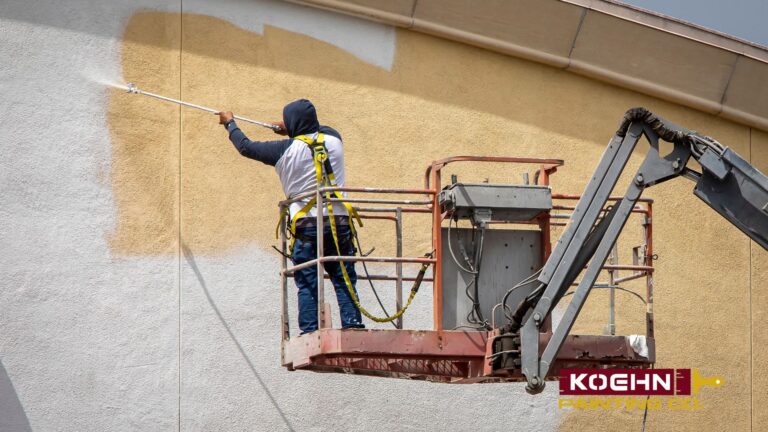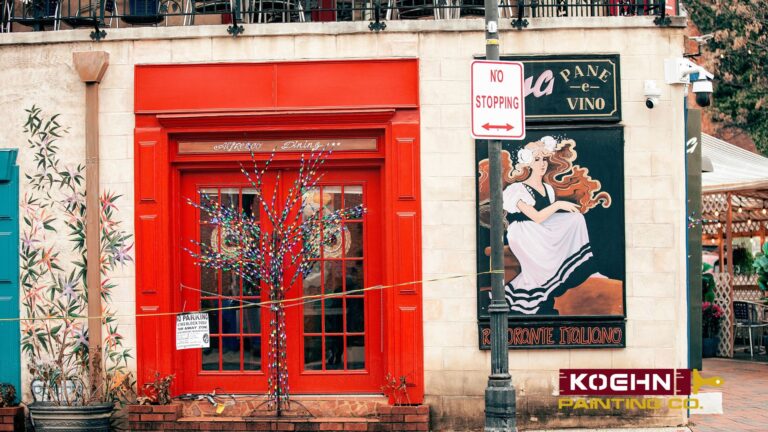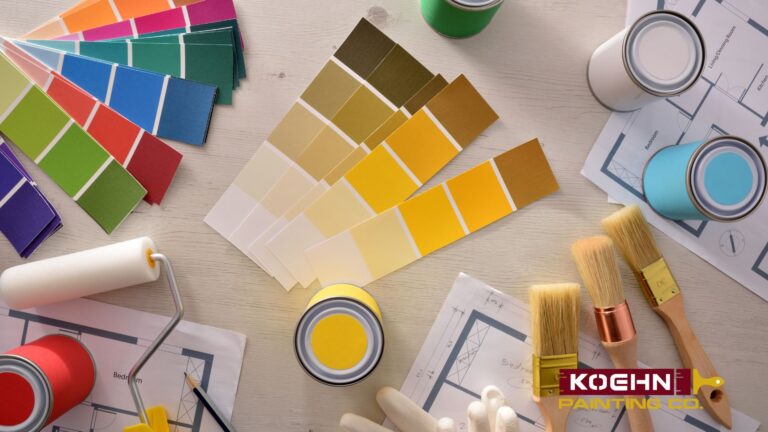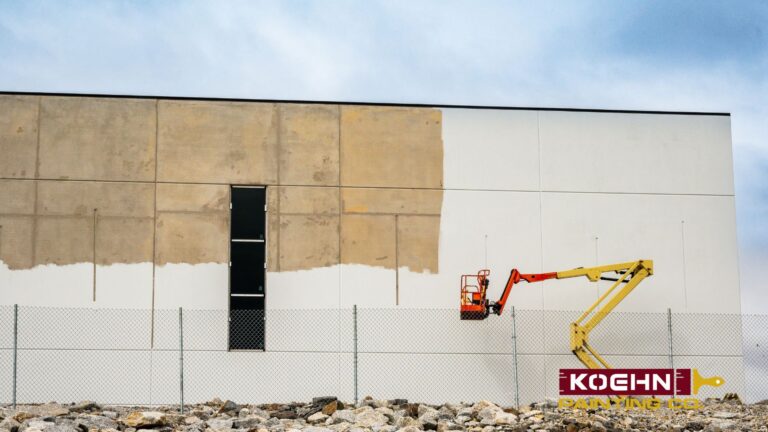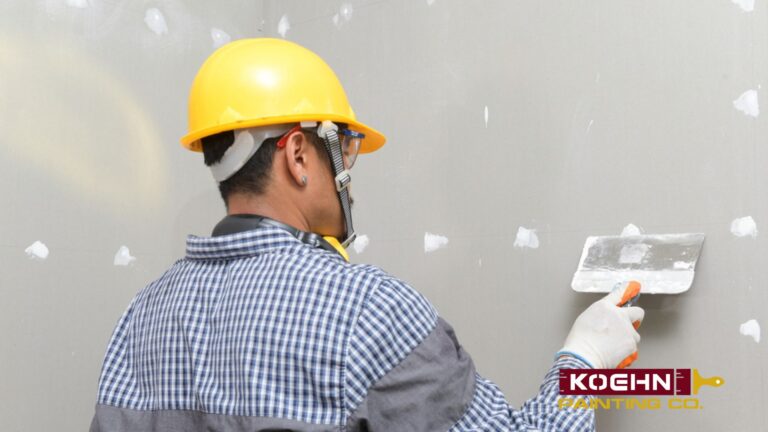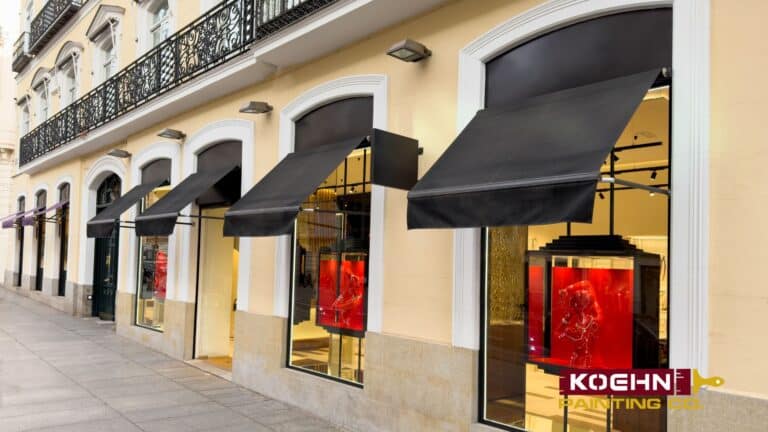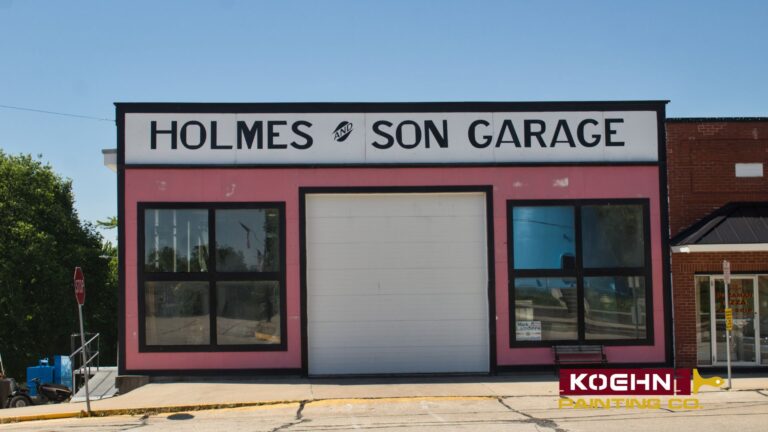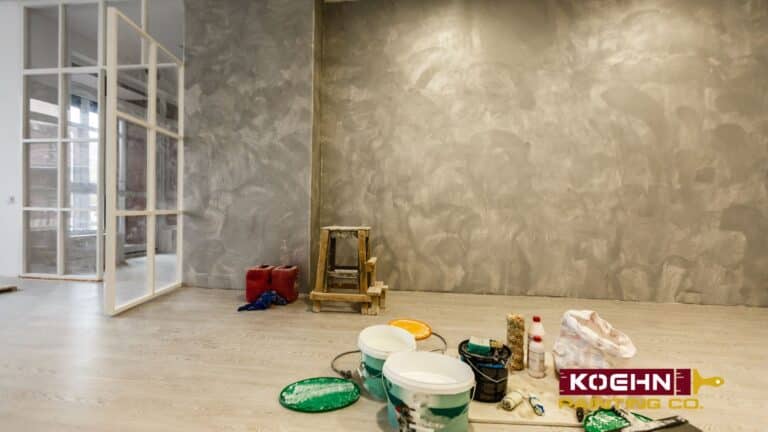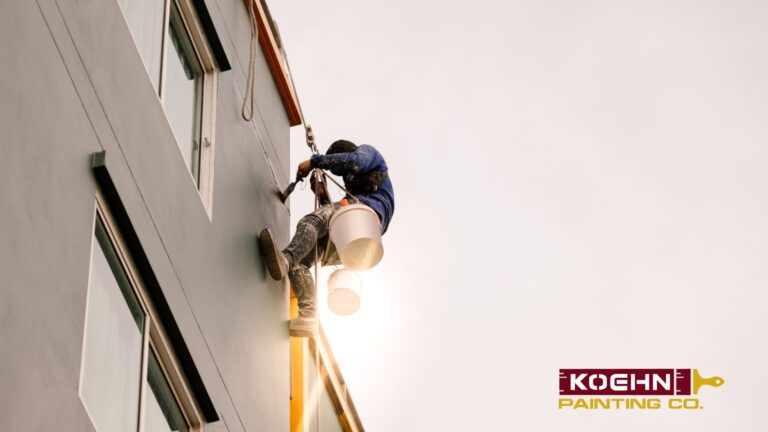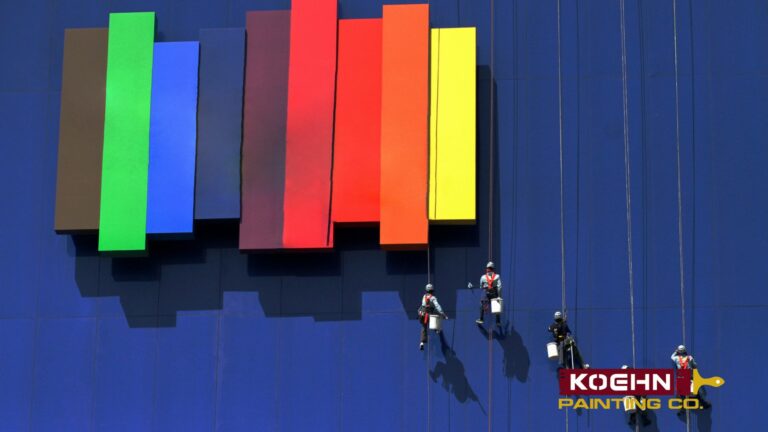13 Benefits of Exterior Painting to Your Home
Expensive—and ongoing—repairs, diminished curb appeal, and declining property values: this is the reality for 60% of homeowners who report delaying essential repairs due to financial constraints. But what if I told you there’s a single, cost-effective upgrade that enhances your home’s value, shields it from the elements, and gives it a fresh appearance, all at once? These are just a few of the many benefits of exterior painting.
According to studies, homes with freshly painted exteriors can see a property value increase of as much as 5%. In fact, painting the exterior of your home is one of the most cost-effective home improvement projects, with a return on investment that far outstrips many other types of renovations.
But it’s not just about adding curb appeal or increasing your home’s market value. A well-maintained exterior provides crucial protection against the elements, safeguards your home’s structure, and even improves energy efficiency. Think of it as a shield—one that protects your home from the harsh effects of rain, wind, UV rays, and even mold and mildew growth.
In this guide, we’ll dive deep into the top 13 benefits of exterior painting, showing you not only how it enhances your home’s appearance but also how it can increase its durability and functionality.
The 13 Benefits of Exterior Painting
Your home’s exterior is its first line of defense against the outside world. From heavy rains to scorching UV rays, your house is constantly exposed to the elements. Yet, many homeowners overlook the importance of regular upkeep, leading to costly repairs and diminished property value.
Thankfully, exterior painting offers a single, cost-effective solution that not only improves curb appeal but also provides essential protection. Let’s dive into the top 13 benefits of exterior painting, starting with its ability to shield your home from the harshest weather conditions.
1. Protect Your Home Against Weather-Related Damage
The exterior of your home faces constant battering from the elements—rain, wind, snow, and UV rays. A well-applied coat of paint acts as a protective barrier, safeguarding your home against these forces.
Paint helps seal surfaces and reduce the impact of UV rays, which cause fading, chalking, and surface breakdown. It also provides an important barrier against rain and wind that can erode your siding over time.
Paint helps seal the surface of your home, ensuring that rainwater doesn’t penetrate the walls and that the wind doesn’t erode the structure. By providing a waterproof layer, high-quality exterior paint also prevents mold, mildew, and algae buildup, which thrive in damp environments.
Exterior paint is key in enhancing the longevity of a home’s siding, trim, and other surfaces by adding a protective layer that shields these areas from environmental damage. The EPA also stresses the importance of using paints that meet environmental safety standards, ensuring your home is not only protected but also in compliance with regulations.
2. Boost Your Home’s Curb Appeal
First impressions matter—especially when it comes to your home. The exterior is the first thing guests, neighbors, and potential buyers see, and nothing transforms a tired, outdated exterior faster than a fresh coat of paint.
Over time, your home’s exterior can lose its luster. Fading paint, peeling trim, and lack of attention can make your home look tired and uninviting.
One of the benefits of exterior painting is that it is one of the most powerful ways to enhance your home’s curb appeal, immediately elevating its appearance and making it stand out in any neighborhood. According to a study published in The Journal of Real Estate Finance and Economics, homes with appealing curb appeal can sell for up to 7% more than similar homes with less attractive exteriors.
Whether you’re preparing to sell or simply want to improve your home’s appearance, nothing transforms a property quite like paint. A well-painted exterior gives your home a polished, cohesive look that makes a strong first impression.
3. Increase Your Home’s Value
While curb appeal is key, a well-painted exterior also plays a major role in increasing your home’s value. A home that looks great on the outside is more likely to catch the eye of buyers and appraisers, leading to higher offers and a quicker sale. In fact, homes with freshly painted exteriors can see a 2-5% increase in value.
For example, Homelight reports that exterior painting can yield a return on investment (ROI) of 51%-55%, highlighting it as one of the most valuable and cost-effective home improvement projects. So, if you’re looking to increase your home’s marketability and attract more potential buyers, painting the exterior is a smart, cost-effective investment.
4. Fix Existing Damage
When was the last time you really looked at your home’s exterior? The signs of wear might be subtle—small cracks, chipped siding, or surface bubbling—but over time, they can lead to larger, costlier structural problems.
Cracks and gaps in your siding or trim can allow air leaks and water infiltration, which accelerate deterioration. Left unaddressed, these vulnerabilities can expand, weaken materials, and even lead to permanent damage.
Before you apply that fresh coat of paint, it’s essential to repair imperfections. Fixing them ensures the paint adheres properly and lasts longer, while also preventing small issues from turning into major repairs.
A simple repair, besides improving the appearance of your home, also ensures that your paint job lasts longer. A well-prepared surface allows the paint to adhere better, providing a more durable and long-lasting finish. The paint will act as a protective barrier, sealing out moisture and reducing the risk of damage in the future.
Taking the time to fix existing damage before painting might seem like an extra step, but it ultimately saves you money by preventing additional repairs and ensuring that your home stays protected for years to come.
5. Extend the Life of Your Siding and Trim
Once your home’s exterior is repaired and prepped, paint becomes a key player in preserving the materials themselves. From wood to vinyl, aluminum to fiber cement, siding and trim benefit from the protective seal that paint provides.
One of the biggest threats to siding is UV exposure. Sunlight breaks down pigments and materials over time, causing fading, brittleness, and surface cracking. Modern exterior paints include UV-blocking pigments that reduce sun damage and slow the aging process.
Consistent exterior painting can add years to your siding’s life by minimizing exposure to environmental stressors and helps prevent surface deterioration, as well as minimize the risk of warping or splitting due to weather extremes.
Take wood siding, for example. If painted and maintained properly, it can last up to 10 years without needing replacement. If you neglect that protective layer, you might be looking at repairs—or even full replacement—within just 3–4 years. Even durable materials like aluminum and fiber cement benefit from repainting, which preserves their finish and adds a layer of protection against corrosion and color fade.
Repainting every few years—before the damage starts—is one of the smartest ways to avoid costly exterior renovations down the line. It’s proactive protection.
6. Prevent Peeling and Staining
A fresh coat of exterior paint does more than make your house look new—it also helps keep it looking that way. One of the most overlooked benefits of exterior painting to your home is the ability to prevent peeling and staining that can ruin your home’s appearance and lead to early repainting costs.
When you invest in modern exterior painting, you’re not just getting color—you’re getting upgraded technology. Today’s premium paints contain high-performance resins and flexible binders that adhere better to siding and resist peeling, even when temperatures swing from hot to cold. This is especially critical for homes in regions with extreme weather. As siding expands and contracts, paint needs to move with it—not crack and flake off.
Modern paints also incorporate anti-stain and anti-fungal additives, helping protect your home from streaks caused by rust, mildew, or environmental pollutants. These technologies drastically reduce the risk of common exterior stains, meaning your paint job stays brighter and cleaner for longer. According to professionals, properly applied high-quality paints can last up to 10 years without significant peeling or discoloration.
7. Express Your Personal Style
We like to think of a home’s exterior as your personal canvas, offering a chance to showcase your taste, creativity, and individuality before anyone even sets foot inside. One of the most rewarding benefits of exterior painting is the opportunity it provides to showcase your individual style to the world.
Today, the idea of expressing personal style through color is more layered than ever..
According to Koehn’s 2025 Paint Color Trends, this year’s most popular palettes go far beyond aesthetics. These colors are driven by wellness, comfort, and a desire to connect with nature or make bold, creative statements.
Here are some of the defining directions for 2025:
- Earthy neutrals: Colors like Mexican Sand, Shiitake, and Tanbark bring warmth and balance. They’re perfect for homeowners who want a calm, grounded exterior that blends beautifully with the natural surroundings.
- Rich, cozy tones: Mocha Mousse (Pantone’s Color of the Year) and Cinnamon Slate are warm browns and plum hues that create an inviting, upscale feel without being loud. These shades suggest comfort, elegance, and timeless design.
- Natural greens and cool blues: Quietude, Gallery Green, and Outerspace reflect a growing trend toward nature-inspired living. These hues offer a sense of calm and serenity, ideal for anyone wanting their home to feel like a retreat.
- Bold accents and vibrant pops: For those wanting to stand out, colors like Dragon Fruit, Euphoric Lilac, and Borscht are gaining attention. These shades are often used on front doors, shutters, or trim to give the home a modern, energetic edge.
A fresh coat of paint is your chance to make your home stand out, feel current, and still reflect your personality.
8. Detect and Address Insect Damage Early
Exterior painting isn’t just about aesthetics; it’s also an opportunity to uncover hidden issues, such as insect infestations. During the preparation phase—scraping, sanding, and priming—professionals often spot subtle signs of pests such as termites or carpenter ants.
These signs might include hollow-sounding wood, small holes, or frass (insect droppings), which are easy to overlook during routine maintenance.
A study published in the American Journal of Engineering and Applied Sciences highlights that termites can infiltrate buildings through various entry points, including cracks in foundations and walls, leading to significant structural damage if left untreated.
Engaging a professional painter who also conducts a thorough inspection can be invaluable. Organizations like the International Association of Certified Home Inspectors (InterNACHI) offer specialized training in Wood-Destroying Organism (WDO) inspections, ensuring that professionals are equipped to identify and address such issues during the painting process.
Addressing insect damage early not only preserves the structural integrity of your home but also prevents more extensive and costly repairs down the line. Incorporating this step into your exterior painting project ensures a comprehensive approach to home maintenance, safeguarding your investment for years to come.
9. Improve Energy Efficiency
Exterior paint color does more than define your home’s style—it can also influence your energy bills. Light-colored paints reflect more sunlight, helping to keep your home cooler in warm climates. In contrast, darker hues absorb heat, which can be beneficial in colder regions.
According to the U.S. Department of Energy, dark-colored home exteriors can absorb 70% to 90% of the sun’s radiant energy, converting it into heat that transfers into the home. This can increase cooling demands during hot weather.
The Light Reflectance Value (LRV) of paint indicates how much light a color reflects. Colors with higher LRV (closer to 100) reflect more light and heat, making them suitable for warmer climates. Conversely, colors with lower LRV (closer to 0) absorb more heat, which can be advantageous in cooler climates.
By selecting exterior paint colors strategically based on your regional climate and your home’s orientation, you can enhance energy efficiency. This thoughtful choice not only contributes to a comfortable indoor environment but also supports energy conservation efforts.
10. Protect Against Moisture and Mold
Moisture is one of the most destructive forces for any home. When it seeps through unsealed siding, cracks, or improperly coated surfaces, it can lead to mold, mildew, and even damage to the foundation.
Painting over cracks or holes may give the surface a temporary facelift, but the issues will resurface quickly. Water infiltration, for example, is one of the most common causes of structural damage.
Exterior paint acts as a critical moisture barrier. High-performance formulas are designed to prevent water infiltration by sealing surfaces, stopping leaks before they start. This helps protect your walls from absorbing water, especially during storms or in humid climates.
Why does this matter? The EPA notes that mold thrives in moist environments and can cause health issues and costly damage to building materials. Left unchecked, it can eat away at wood, drywall, and insulation.
Even more concerning, according to the Centers for Disease Control and Prevention (CDC), mold remediation can cost homeowners thousands of dollars if it spreads inside walls.
By investing in professional painting and moisture-resistant coatings, you take a proactive step to prevent mold, mildew, and the structural problems they can cause.
11. Cost-Effective Renovation Option
Exterior painting offers homeowners a budget-friendly alternative to more extensive renovations, delivering substantial visual and financial benefits without the hefty price tag of major exterior overhauls.
Comparative Costs:
- Exterior Painting: For a 1,500-square-foot home, painting the exterior typically costs between $1,500 and $4,000, depending on paint quality and labor.
- Siding replacement: Replacing siding can be significantly more expensive. For instance, vinyl siding replacement averages around $17,410, while fiber-cement siding can cost approximately $20,619.
- Roof replacement: A new asphalt shingle roof averages about $30,680, making it one of the more costly exterior renovations.
Return on Investment (ROI):
While painting is less expensive upfront, it also offers a competitive return on investment (ROI). Exterior painting can yield a return of 51% to 55%. This means that homeowners can recoup more than half of their investment when selling their home.
In contrast, while siding replacement has a higher upfront cost, it also offers a higher ROI. For example, fiber-cement siding replacement has an ROI of 88.4%, and vinyl siding replacement has an ROI of 80.2% .
So, for homeowners seeking a cost-effective way to enhance their home’s appearance and value, exterior painting stands out as a practical choice. It provides a significant visual upgrade and a respectable return on investment, all at a fraction of the cost of more extensive renovations like siding or roof replacements.
12. Create a Fresh Start for Your Home
A new coat of paint does more than refresh your home’s appearance—it can also rejuvenate your mental well-being. Engaging in home improvement projects, such as painting, has been linked to enhanced mental health outcomes.
A study published in the American Journal of Public Health found that residents who experienced housing improvements reported higher mental health scores compared to those who did not, suggesting that such enhancements can lead to short-term mental health benefits.
The act of painting allows homeowners to express their creativity and exert control over their environment, which can be particularly empowering. According to research in Frontiers in Psychology, engaging in aesthetic activities like painting can positively affect mood and promote psychological well-being.
Moreover, the choice of color in painting can influence emotional states. Color psychology suggests that certain hues can evoke specific feelings; for instance, soft blues and greens are often associated with tranquility, while warmer tones like yellows and oranges can promote energy and positivity.
In summary, painting your home’s exterior not only revitalizes its look but also offers a therapeutic avenue for enhancing mental health, providing a sense of accomplishment, and creating a personalized space that reflects your emotional needs.
13. Increase Your Home’s Resilience to Climate Change
As climate events become more frequent and extreme, homes need to do more than just look good—they need to be resilient. Exterior painting can be a small but powerful part of that strategy.
From severe heatwaves to prolonged humidity and sudden freezes, the paint you choose—and how it’s applied—can help your home better withstand these changes. High-quality exterior coatings act as a protective layer, shielding against extreme temperature swings that can cause expansion and contraction in siding, leading to warping or cracking. Reflective coatings can help homes stay cooler in extreme heat, reducing energy strain. Mold-resistant paints can protect against rising humidity and storm surges.
According to the National Centers for Environmental Information, the U.S. experienced 28 separate billion-dollar climate disasters in 2023 alone—a new record. Many of these events caused long-term damage to homes that were not properly maintained or protected.
While paint can’t prevent a flood or wildfire, it can be your home’s first line of defense in less extreme, yet increasingly common, conditions. Paint fortified with climate-specific technology—like UV blockers, thermal barriers, and water-repellent formulas—can offer a critical layer of resilience.
In an era of shifting weather patterns, painting your home means preparation and care.
When you add up the 13 benefits of exterior painting, it becomes clear: this isn’t just a cosmetic upgrade—it’s one of the smartest, most impactful investments you can make in your home.
When Is The Best Time for Exterior Painters to Work?
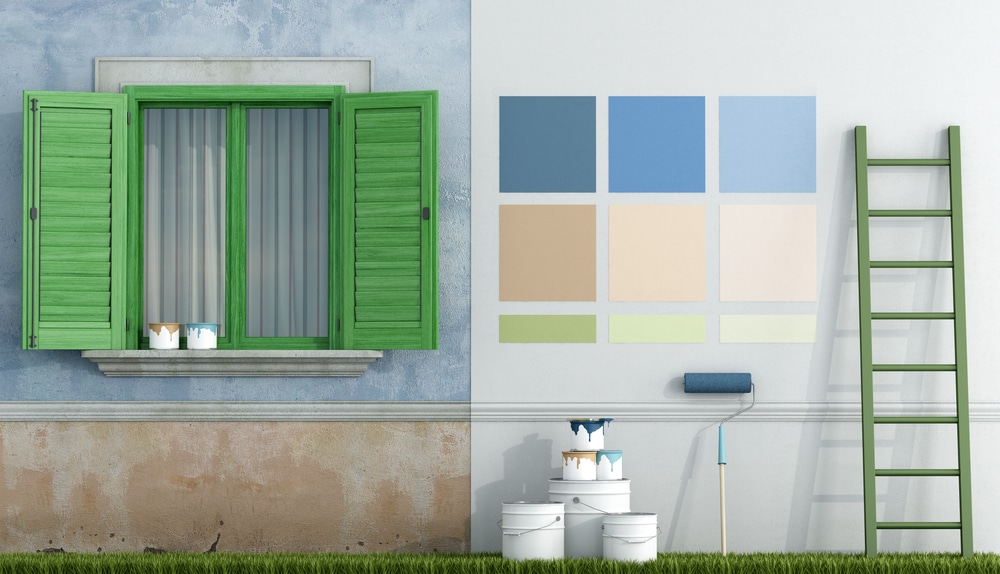
While understanding the benefits of exterior painting is important, having the work done by experienced professionals is crucial. Exterior painters understand that timing is crucial to maximize the benefits of exterior painting. Optimal weather conditions ensure proper paint adhesion, durability, and a flawless finish.
Here’s a seasonal breakdown to guide your exterior painting projects:
Spring: Optimal Conditions for Painting
- Mild Temperatures: Spring offers temperatures between 50°F and 70°F (10°C to 21°C), ideal for paint application and curing.
- Low Humidity: Reduced moisture levels help paint dry evenly, minimizing issues like blistering or peeling.
- Stable Weather: Fewer rain interruptions and minimal pollen levels contribute to a cleaner, smoother finish.
Summer: Proceed with Caution
- High Temperatures: Excessive heat can cause paint to dry too quickly, resulting in cracking or uneven texture.
- Increased Humidity: Elevated moisture levels may prolong drying times and affect paint adhesion.
- Best Practices: Paint during early mornings or late afternoons to avoid peak heat, and monitor weather forecasts closely.
Fall: Another Ideal Window
- Consistent Temperatures: Cooler days with temperatures ranging from 50°F to 70°F (10°C to 21°C) are favorable for painting.
Lower Humidity: Dry air conditions help paint cure properly, which enhances its longevity.
Minimal Rainfall: Reduced precipitation decreases the risk of paint wash-off or surface contamination.
Winter: Generally Not Recommended
- Low Temperatures: Cold weather can prevent paint from curing correctly, leading to poor adhesion and durability.
- Moisture Concerns: Snow, frost, and dew can interfere with paint application and drying processes.
- Exceptions: In milder climates or with specialized cold-weather paints, exterior painting may still be feasible.
For optimal results, schedule exterior painting projects during spring or fall when temperatures are moderate, humidity is low, and weather conditions are stable.
These periods provide the best environment for paint to adhere correctly and cure effectively, ensuring a durable and visually appealing finish.
How Often Should You Paint Your Home Exterior?
When it comes to preserving your home’s value and appearance, one of the most common questions homeowners ask is: How often should I paint my home’s exterior? The answer depends on your siding material, the local climate, and even the quality of your last paint job.
For instance, wood siding generally needs repainting every 3 to 7 years, or every 4 years if it’s stained instead of painted. In contrast, more durable materials like fiber cement or brick can go 10 to 15 years before needing a refresh. Vinyl siding might last 10 to 20 years, though color fading from sun exposure often prompts a cosmetic update sooner.
Here’s a general rule of thumb:
- Wood: 3–7 years
- Stucco: 5–6 years
- Aluminum: 5–10 years
- Fiber cement: 10–15 years
- Painted brick: 12–15 years
But that’s not the whole picture—your environment plays a massive role in how long exterior paint will hold up. Homes in coastal areas or humid southern climates tend to require more frequent upkeep. The combination of salty air, UV exposure, and high humidity can cause paint to break down faster, often requiring repainting every 3–5 years. On the flip side, homes in dry, temperate climates can stretch their timelines to 7–10 years or more.
In snowy regions, moisture from snow and ice—along with freeze-thaw cycles—can cause paint to crack or peel. And in sun-drenched desert areas, fading from UV exposure means the paint might still be intact, but visually worn.
No matter where you live, your home will give you signs that it’s time for a new coat. If you’re noticing fading, cracking, bubbling, or visible wear, don’t wait for the timeline to run out—act before damage sets in. Repainting on time not only enhances curb appeal
Contact us here if you would like to find the best painting contractor for your residential or commercial painting needs.
Exterior Residential Painting: Hiring a Pro or DIY?
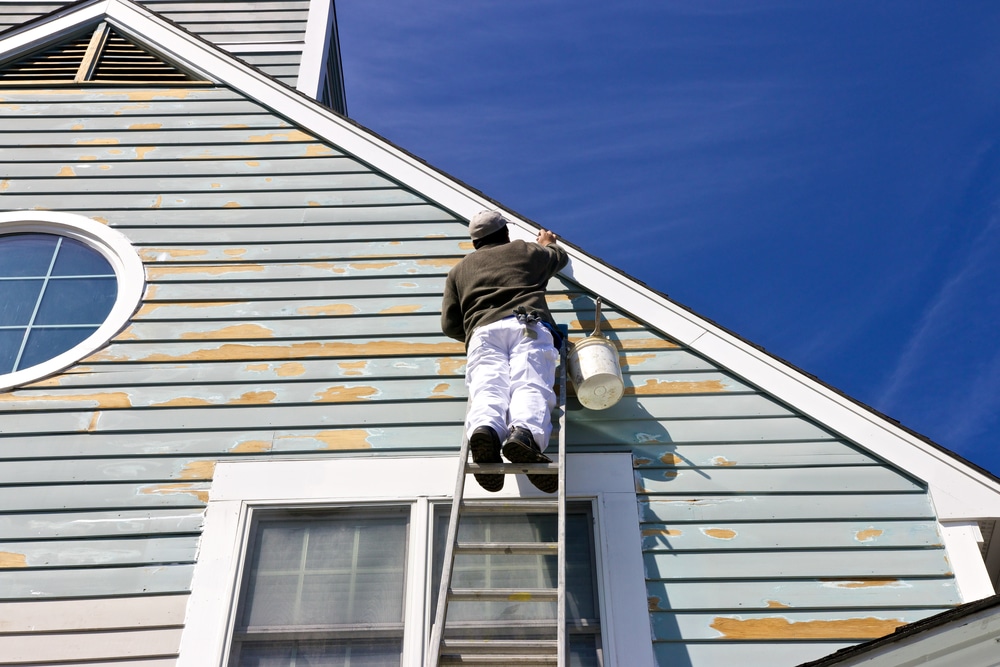
When considering exterior residential painting, homeowners often weigh the benefits of exterior painting themselves against hiring professional exterior painters.
But let’s recap: why do people paint outside in the first place? It’s not just about aesthetics. A quality paint job is one of the most cost-effective ways to protect your home from the elements, increase its value, and improve curb appeal. And because of that, it’s essential to not only understand its importance but also the value of hiring someone who truly knows what they’re doing.
The case for hiring a professional
Bringing in professionals means more than just saving time. Skilled exterior painters are trained to spot problems that most DIYers overlook—things like early signs of mold, wood rot, or insect damage. They know the proper techniques and use industry-grade tools to ensure a clean, durable finish.
Is there really a difference between interior and exterior paint? Absolutely—and we’ve seen the results firsthand. Exterior paints are specially formulated to withstand temperature swings, UV rays, and moisture, unlike interior paints, which are made for controlled environments. A pro knows the difference and will make sure you’re using the right one in the right place.
The DIY approach: When it makes sense
DIY painting can save money and give you a sense of personal accomplishment. If your home is single-story, the surfaces are in good shape, and you’re confident working at heights, you might consider it. But be realistic. Without proper prep, the right equipment, and knowledge of painting conditions, your hard work might not last long.
According to research, one of the most common reasons for premature paint failure is poor surface preparation—something that pros rarely get wrong.
Exterior residential painting is more than just a weekend project—it’s a crucial layer of protection for your home. Whether you choose the DIY approach or hire professionals, the key is understanding the true benefits of ext
Conclusion: Benefits of Exterior Painting
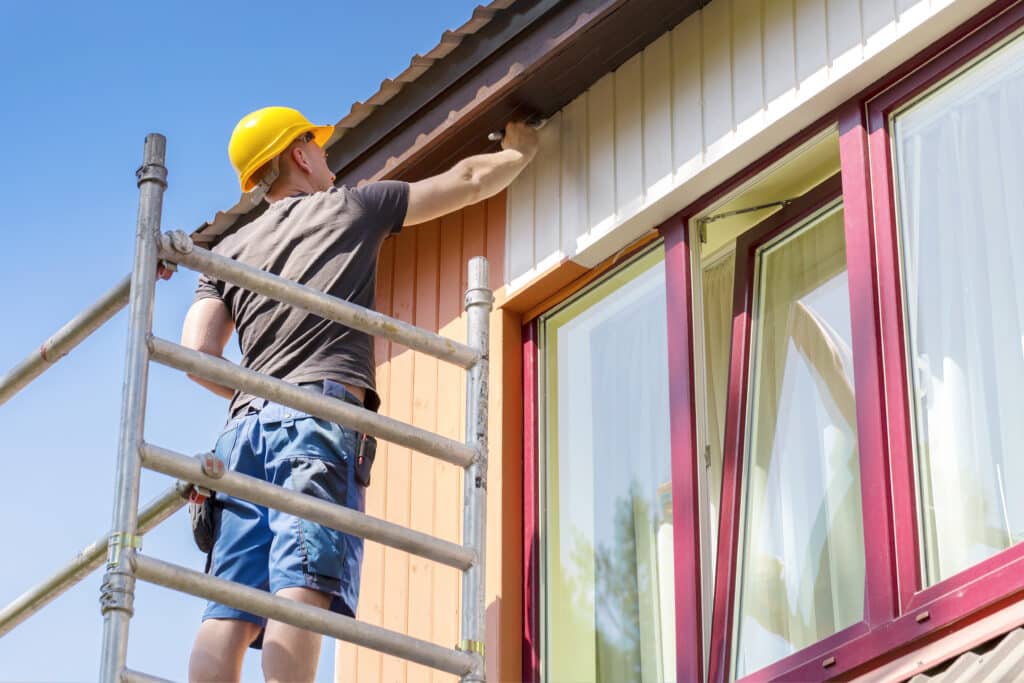
The benefits of exterior painting go far beyond appearance. A high-quality paint job helps shield your home from harsh weather, slows down material wear, and can even improve energy efficiency. It plays a direct role in preserving your property’s structure, reducing maintenance costs, and increasing long-term value.
Painting your home is also a powerful way to refresh its presence. It boosts curb appeal, signals pride of ownership, and offers a renewed sense of comfort every time you pull into the driveway. It’s a smart, measurable upgrade that brings both visual and functional impact.
At Koehn Painting, we bring decades of experience to every project. Our team understands what it takes to get lasting results with minimal disruption—no shortcuts, no surprises. We use proven techniques, durable products, and a personalized approach to make sure your home looks great and stays protected for years to come.
If you’re thinking about giving your home a lasting upgrade, get in touch with Koehn Painting. We’ll walk you through the options, answer your questions, and make sure the finished work matches both your goals and your standards.

